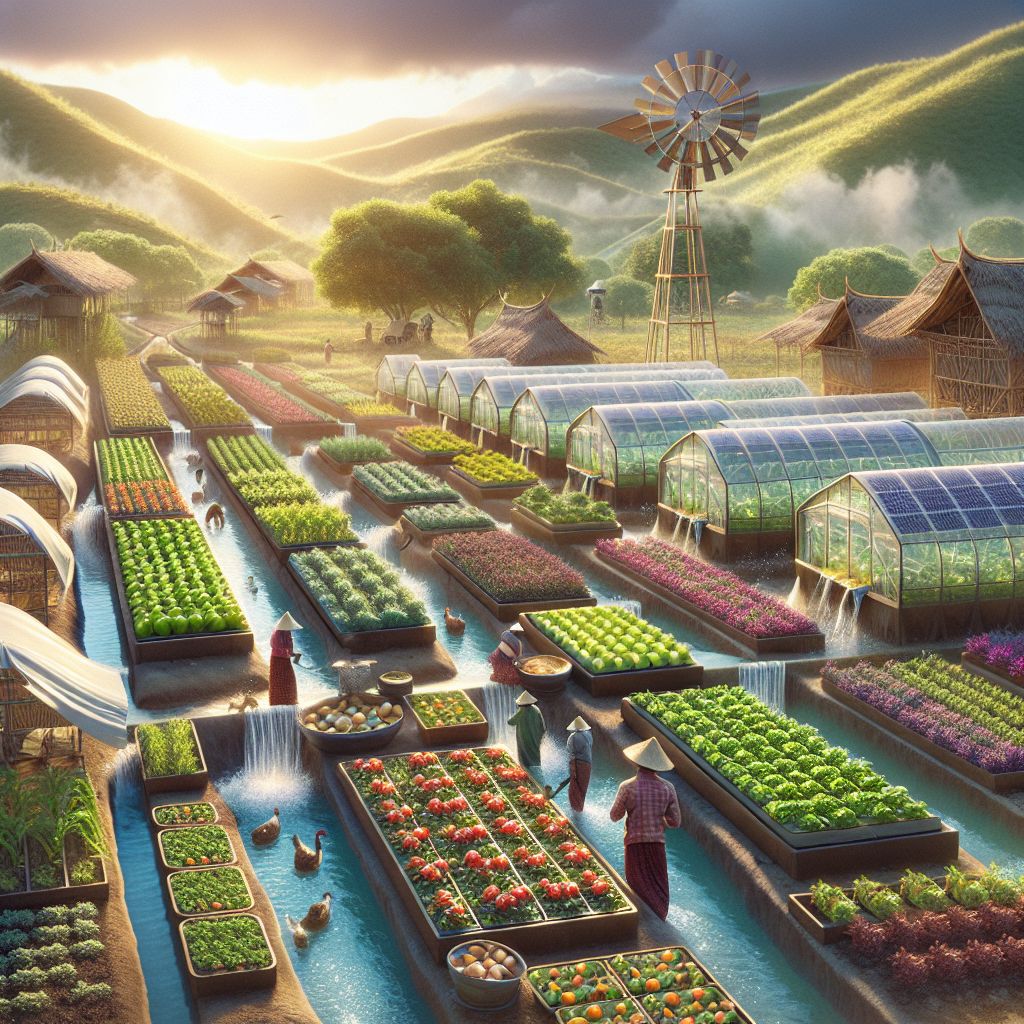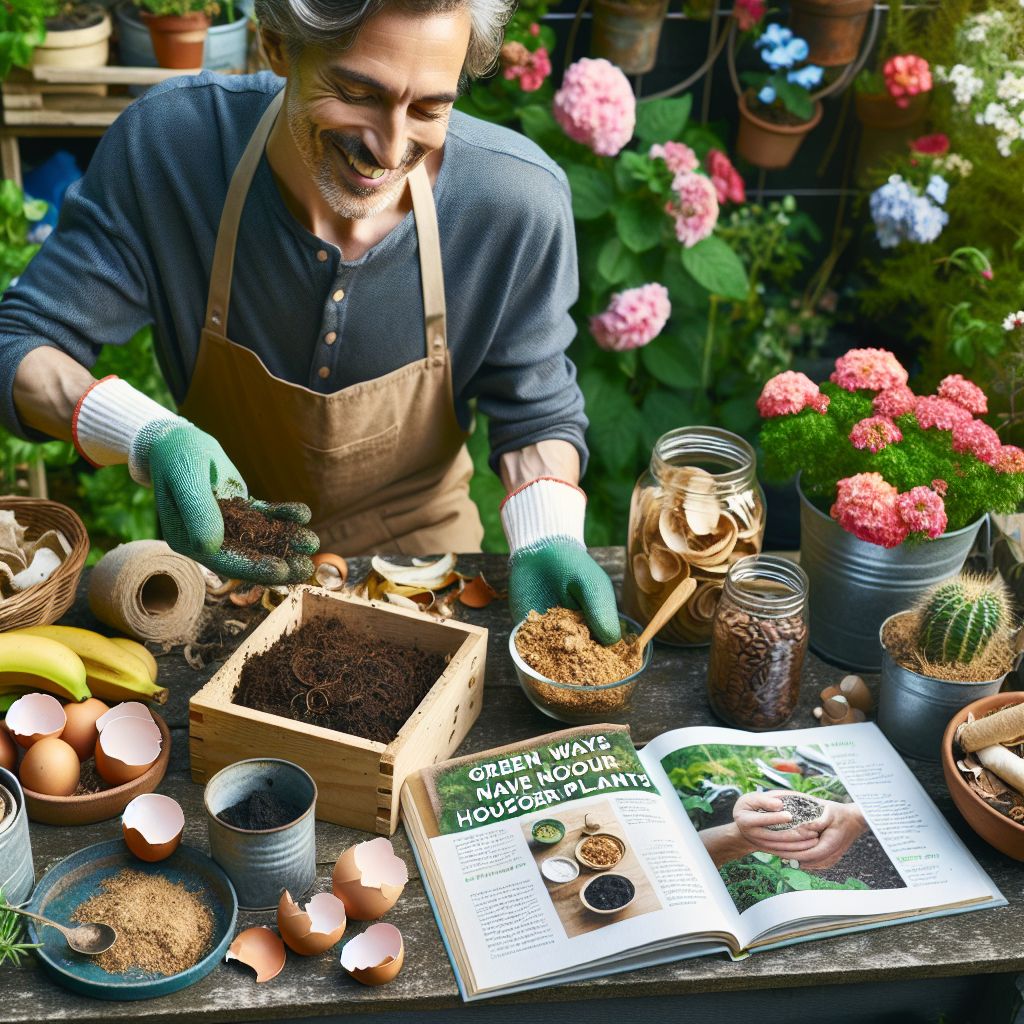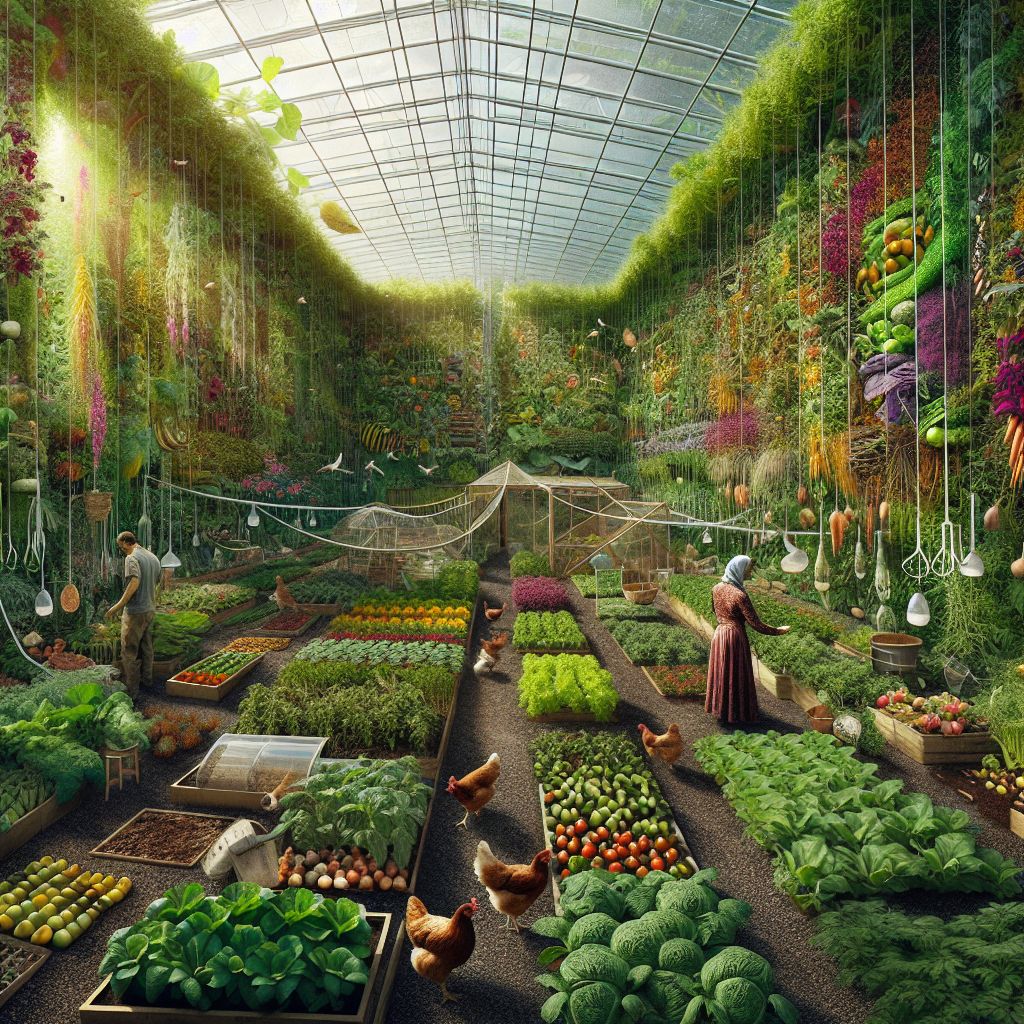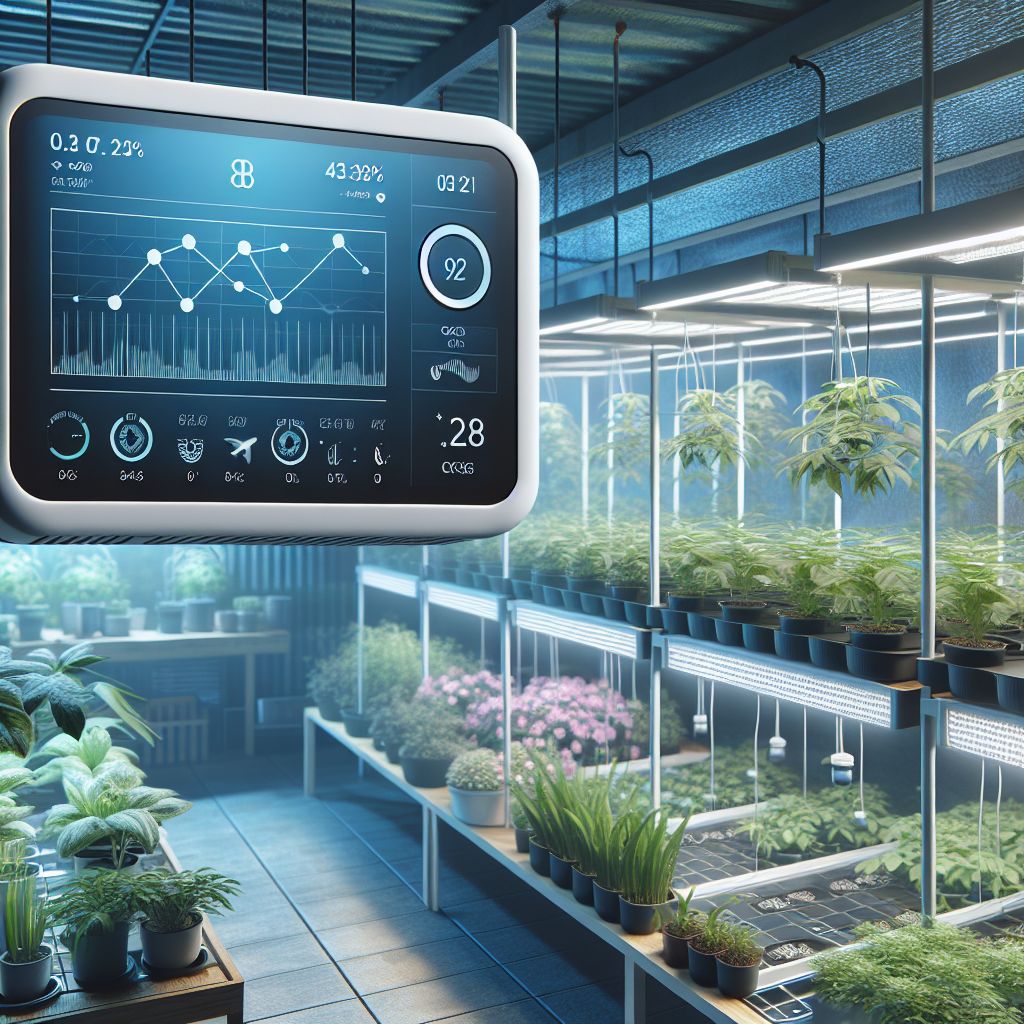Key Takeaways
-
Understanding and controlling greenhouse humidity is crucial for plant health and optimal yields.
-
Regular monitoring with a hygrometer is essential to maintain the right humidity levels.
-
Using tools like humidifiers, dehumidifiers, and ventilation can help balance greenhouse humidity.
-
Watering practices significantly impact humidity levels and should be managed carefully.
-
Knowing your crops and their specific humidity needs is key to creating the right environment for growth.
Why Humidity Matters for Your Greenhouse
Let’s start with the basics. Humidity is the amount of water vapor in the air, and in a greenhouse, it’s a big deal. Plants need moisture to survive, but too much can lead to diseases and too little can stress them out. The trick is to keep humidity just right. Why? Because plants breathe through their leaves. When the air is too dry, they lose too much water and can dehydrate. On the flip side, if it’s too moist, they can’t draw in the carbon dioxide they need to grow. That’s why we keep a close eye on humidity.
Identifying the Signs of Imbalanced Humidity
Keep an eye out for these tell-tale signs that your greenhouse humidity might be off balance:
-
Condensation on leaves or greenhouse surfaces could mean too much humidity.
-
Wilting or dry, crispy leaves often signal that the air is too dry.
-
A musty smell or visible mold points to excessive moisture and poor air circulation.
Measuring and Monitoring: The First Step to Mastery
Before you can control humidity, you need to measure it. That’s where a hygrometer comes in—it’s like a thermometer for moisture. Place it at plant height because that’s where humidity matters most. Check it at least twice a day, because humidity can change with the temperature. In the morning, you might see a spike from overnight cooling, and in the afternoon, a drop as things heat up.
Choosing the Right Hygrometer for Your Greenhouse
Not all hygrometers are created equal. You want one that’s reliable and easy to read. Look for a digital model with a remote sensor so you can check conditions without disturbing your plants. Some even connect to your phone for around-the-clock monitoring. Remember, accuracy is key—you’re basing your decisions on these readings.
How Often Should You Check Humidity Levels?
Consistency is your best friend when it comes to monitoring. Check your humidity levels at least twice a day—once in the morning and once in the evening. But don’t stop there. Keep an eye on your plants throughout the day, and you’ll start to get a feel for how they respond to the ebb and flow of moisture in the air.
For example, let’s say you’ve got a batch of young tomato plants. You notice the leaves are a bit limp by mid-afternoon, even though the soil is moist. That’s a clue that your humidity might be too low during the hottest part of the day, and your plants are losing water faster than they can take it in.
Humidifiers and Dehumidifiers: Balancing the Scales
Now, if your readings are showing that the humidity is too high or too low, it’s time to take action. That’s where humidifiers and dehumidifiers come in. If the air is too dry, a humidifier adds moisture. But if it’s too damp, a dehumidifier will help dry things out. It’s all about balance. You want to create an environment where your plants can breathe easy and grow strong.
Choose a humidifier or dehumidifier based on the size of your greenhouse and the specific needs of your plants. Some plants like it more tropical, others prefer it on the drier side. And remember, these devices need to be cleaned regularly to prevent the spread of pathogens. It’s a little extra work, but your plants will thank you for it.
Ventilation Strategies to Maintain Ideal Moisture Levels
Besides that, good ventilation is crucial for managing humidity. It helps to circulate air and prevent the buildup of too much moisture. You can use roof vents, side vents, or even fans to keep the air moving. The key is to find a balance. You want enough ventilation to control humidity, but not so much that you’re cooling down the greenhouse too much or stressing your plants with too much wind.
Water Wisely: Irrigation Tips for Humidity Control
Watering your plants is about more than just quenching their thirst. It’s a critical factor in controlling greenhouse humidity. How and when you water can raise or lower the humidity level. For example, watering in the morning gives your plants time to absorb moisture before the heat of the day, which can help prevent excessive humidity. And using drip irrigation can keep water off the leaves and reduce the chance of disease.
The Dos and Don’ts of Greenhouse Watering
When it comes to watering in a greenhouse, there are a few simple rules to follow:
-
Do water in the morning to allow plants to dry before nighttime.
-
Don’t overwater; standing water increases humidity and disease risk.
-
Do use soil moisture sensors to water only when necessary.
-
Don’t water from above if you can help it; wet leaves can lead to fungal diseases.
These practices will help you manage not just the health of your plants, but the overall moisture level in your greenhouse.
Automating Irrigation for Consistency and Control
Automation can be a game-changer for managing humidity. An automated irrigation system takes the guesswork out of watering. It can deliver the right amount of water at the right time, every time. This helps to maintain consistent humidity levels and takes one more thing off your to-do list. With sensors and timers, you can tailor the watering schedule to the needs of your plants and the conditions inside your greenhouse.
Smart Plant Management: Crop-Specific Humidity Needs
Different plants have different humidity needs. It’s as simple as that. Some crops thrive in a jungle-like environment, while others prefer the arid air of a desert. Knowing what your plants need is the first step to giving them the best care.
For instance, let’s say you’re growing orchids and cacti in the same space. They’re going to need different humidity levels. You might use partitions or curtains to create micro-environments within your greenhouse. This way, you can keep each plant in its ideal conditions without having to compromise.
Selecting Crops Suited to Your Greenhouse Environment
Before you even plant a seed, think about your greenhouse conditions. If you live in a humid climate, choose plants that love moisture. If it’s dry, go for those that tolerate drought. And if you want to grow something that’s not a perfect fit, be prepared to put in the extra work to create the right environment for it.
Here are some crops and their preferred humidity levels:
-
Leafy greens like lettuce and spinach prefer higher humidity levels.
-
Tomatoes and peppers are more tolerant of moderate humidity.
-
Succulents and cacti thrive in low humidity environments.
Choose wisely, and you’ll be halfway to a healthy, productive greenhouse. For more in-depth information, consider reading about optimal humidity and temperature for greenhouse growing.
Adjusting Practices for Different Growth Stages
Just as kids need different things as they grow up, plants have different needs at different stages of growth. Seedlings, for example, love high humidity—it helps them take root and grow strong. But as plants mature, they might need less moisture in the air. That’s why it’s important to adjust your humidity control practices as your plants grow. Keep an eye on them and be ready to adapt. It’s all part of the journey.
For example, when your seedlings have taken root and are starting to grow leaves, you might start to lower the humidity a bit to encourage stronger stems and prevent fungal diseases. It’s a delicate balance, but with a little observation and adjustment, you’ll find the sweet spot.
Temperature and Its Ties to Humidity
Temperature and humidity go hand in hand. Warm air can hold more moisture than cold air, so as the temperature goes up, so does the potential for higher humidity. This is important to remember because it means that by controlling the temperature, you can also influence the humidity.
Using Heating and Cooling to Adjust Humidity Indirectly
If you need to lower the humidity, you can cool down your greenhouse a bit. This will cause the air to hold less moisture and some of it will condense and settle out. Conversely, if you need to raise the humidity, you can turn up the heat. Just remember that your plants have optimal temperature ranges, too, so keep an eye on them as you adjust.
Most importantly, use thermostats and sensors to maintain consistent temperatures. This will help prevent sudden spikes or drops in humidity that can stress your plants.
Here’s a quick reference for the relationship between temperature and humidity:
|
Temperature |
Relative Humidity |
|---|---|
|
Cooler |
Lower Humidity |
|
Warmer |
Higher Humidity |
The Relationship Between Outside Weather and Greenhouse Humidity
Don’t forget to consider the weather outside. It can have a big impact on the climate inside your greenhouse. On a rainy day, you might need to dehumidify more than on a sunny one. And on a hot, dry day, you might need to add moisture to the air. Keep an eye on the forecast and adjust your humidity control measures accordingly. This way, you can stay one step ahead of Mother Nature and keep your greenhouse in the Goldilocks zone—not too wet, not too dry, but just right.
Creating a Daily Checklist for Humidity Control
Consistency is vital when it comes to maintaining optimal humidity levels in your greenhouse. A daily checklist can serve as a roadmap to ensure you don’t miss any crucial steps. Here’s what you should include:
-
Check the hygrometer readings first thing in the morning and before sunset.
-
Inspect plants for signs of stress or disease that could indicate humidity issues.
-
Verify that ventilation systems are working correctly and adjust as needed.
-
Monitor the water levels in humidifiers or dehumidifiers and refill or empty as necessary.
-
Record any adjustments made to the humidity controls for future reference.
Adhering to this checklist will help you maintain a stable environment for your plants and can alert you to any changes that need to be addressed promptly.
For instance, you might notice that your plants are consistently showing signs of wilt every afternoon. This could indicate that the morning watering isn’t sufficient or that the midday heat is causing the greenhouse to dry out too quickly. Adjusting your watering schedule or improving your shading techniques could be the solution.
It’s these small daily observations and adjustments that lead to a well-managed greenhouse environment.
When to Adapt Your Approach for the Changing Seasons
As the seasons change, so do the humidity needs of your greenhouse. In the spring and summer, you might need to increase ventilation to manage the higher humidity levels that come with warmer weather. In the fall and winter, you may need to add more moisture to the air as the outside temperature drops and the air becomes drier.
It’s important to anticipate these changes and adjust your humidity control practices accordingly. This might mean changing the settings on your humidifiers and dehumidifiers, or altering your watering schedule to adapt to the changing needs of your plants.
FAQs
Let’s answer some common questions to ensure you have all the knowledge you need to manage greenhouse humidity effectively.
What is the ideal humidity level for a greenhouse?
The ideal humidity level for a greenhouse typically ranges between 50-70%. However, this can vary depending on the types of plants you’re growing and their specific needs. Some tropical plants may thrive at higher humidity levels, while cacti and succulents prefer drier conditions.
Can you use household humidifiers/dehumidifiers in a greenhouse?
While household humidifiers and dehumidifiers can be used in a greenhouse, they may not be as effective or efficient as units designed specifically for greenhouse conditions. Greenhouse-specific models are built to handle the larger space and the more demanding environment.
However, for small greenhouses or hobbyists, a household unit might be sufficient. Just be aware that you may need to run it more frequently and keep a closer eye on its performance.
How does plant spacing affect greenhouse humidity?
Plant spacing can have a significant impact on greenhouse humidity. Proper spacing allows for adequate air circulation, which can help prevent the buildup of moisture on leaves and reduce the risk of disease. Overcrowded plants can create microclimates with higher humidity, which can lead to problems.
What are some natural ways to control humidity?
Natural ways to control humidity in a greenhouse include:
-
Improving ventilation by opening vents or using fans.
-
Using moisture-absorbing plants like Boston ferns to help reduce humidity.
-
Applying mulch to soil to reduce surface evaporation.
-
Using shade cloths to control temperature and indirectly manage humidity.
How do I know if my humidity control practices are effective?
You’ll know your humidity control practices are effective if your plants are healthy, showing no signs of stress, and you’re achieving the yields you expect. Keep a log of humidity levels, plant health, and any changes you make. Over time, this record will help you understand what’s working and what might need to be adjusted.
Remember, the goal is to create the ideal environment for your plants to flourish. By closely monitoring and managing greenhouse humidity, you’re setting the stage for a bountiful and successful harvest.
Maintaining the right level of humidity in a greenhouse is crucial for the health and yield of your crops. Too much humidity can lead to mold and plant diseases, while too little can stress plants and hamper growth. For a comprehensive understanding of how to achieve this balance, consider exploring our detailed greenhouse humidity control guide which covers best practices and crop management tips to help you optimize your greenhouse environment.





